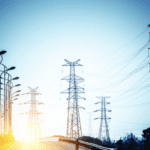The highs and lows of markets for renewable energy are driving more interest in granular pricing data. Any company embarking on a new project must do its research to ensure that it calculates the proceeds based on the right financial information. With so much data now readily available, it’s more important than ever to use the right data, and make accurate calculations.
Amid the boom in demand for renewable power plants, that is not always happening when backers go to measure the value of the energy they will generate. Here’s why, according to Jennifer Newman, vice president of Atmospheric Science Research at REsurety, the Boston, Massachusetts-based renewable industry data and analytics company, who says friends don’t let friends use “8760s.”
POWER: What is an 8760 and how is it used in the renewable energy industry?
Newman: An 8760 (sometimes referred to as a typical meteorological year or TMY) consists of hourly generation values for a wind or solar project for all 8,760 hours of a typical year. Importantly, 8760s are almost always used to represent average generation for a renewable energy project in a given hour.
POWER: And what’s the problem? Why shouldn’t 8760s be used to estimate the value of power generation being produced by renewable energy projects?
Newman: An 8760 isn’t bad on its own—it’s a perfectly acceptable way of representing average generation. The issue is when a generation 8760 is paired with hourly power prices to produce either a revenue backcast (an estimate of the revenue a project would have made given historical prices) or a revenue forecast (an estimate of how much revenue a project could earn in the future).

The problem with a backcast is that hourly renewable generation influences power prices during each hour. And that’s because wind and solar tend to be very inexpensive sources of electricity. So an hour where there’s a lot of wind or solar on the grid will tend to be associated with lower power prices, particularly in markets with high renewable penetration. When you use an 8760 instead of actual generation values during each timestamp, you aren’t able to capture that impact of hourly generation on hourly power prices.
And when analysts are using a model to predict future power prices, it’s a mistake to assume that conditions in the future will be similar to an “average weather year.” Abnormal weather conditions can cause drastic price changes, as we all saw in Texas during February 2021.
POWER: So what should be used to accurately calculate the value of renewable power generation?
Newman: There’s an abundance of rich datasets we can use to inform our decisions on whole new levels. For a backcast analysis, we should be using concurrent generation and price time series data to make these calculations and avoid errors (i.e., the generation volume that is used for 7 a.m. on January 13, 2019 should reflect the same weather conditions that generated the price that was observed in that same hour). In a forward-looking scenario, you should use a variety of different potential weather conditions beyond just an average year. Would you want to use a typical Texas February to project possible gains and losses, now that you know that Texas in February of 2021 is possible?
POWER: Where does a company turn to ensure it’s using the right information?
Newman: A tool such as REsurety’s REmap models hourly generation for every wind and solar project in the United States, and will soon look forward at hypothetical situations to allow for future planning. REmap also offers data for synthetic situations—the “what if” planning for potential future sites—including historical modeled generation, observed power prices, and the combination of generation and power prices to estimate revenue. (Editor’s note: The National Renewable Energy Laboratory is among the groups modeling renewable energy costs, with its CREST modeling tool.)
Getting beyond 8760s can not only steer a company to site a new renewable project in one location versus another, it also can provide guidance on the financial risk associated with a range of potential weather conditions.
—Jennifer Newman, Vice President of Atmospheric Science Research at REsurety, is an atmospheric scientist with experience in boundary layer meteorology, remote sensing, machine learning, and wind resource assessment. As a research scientist at REsurety, she investigates new methods for estimating the risk of potential wind projects. She completed a postdoctoral fellowship at the National Renewable Energy Laboratory with a focus on improving turbulence estimates from Doppler wind lidars. She holds PhD and master’s degrees in meteorology from the University of Oklahoma, where she chased tornadoes as a hobby, and a bachelor’s in atmospheric science from Cornell, where she graduated with distinction in research.










